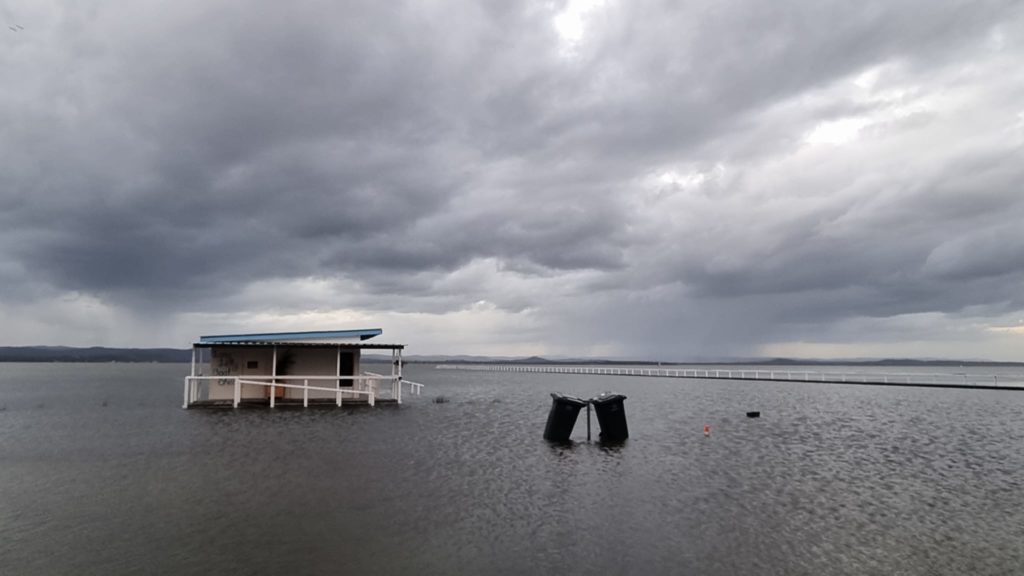As severe storms continued to pummel the Central Coast over the weekend and into this week, SES crews were stretched to the limit, coping with hundreds of calls for help.
Central Coast Chief Inspector Rolf Garda said the SES had responded to 670 incidents in the seven days to Wednesday, May 8.
“Tuggerah lakes went up to minor flood level, Wyong River rose to six metres and there was the usual low-lying flooding around the lakes, including Chittaway Rd and around Long Jetty,” he said on Wednesday.
“Many roads around the lakes are still blocked or have water on them; the water is not dropping as quickly as it has in the past.
“On Sunday night the usual roads went under – Racecourse Rd at West Gosford, roads at Matcham, Wells St and Burns Rd at Ourimbah.

“It’s the same script at every event.
“Cars get caught out with flash flooding and many don’t realise how deep the water is on some roads.”
Garda said many jobs involved damage from branches and trees and leaking rooves, with hundreds of tonnes of sandbags distributed to homeowners.
“We were able to get a couple of teams up from Sydney and the mid north coast to help but we have finite resources,” he said.
“The community wants quick action but our volunteers have day jobs.”
Garda said while it was easy to get caught out by flash flooding, motorists who ignored Road Closed signs garner little sympathy from emergency services.
He said residents could ease the burden on SES services for future events by undertaking their own mitigation measures.

Residents in low-lying areas prone to flood could stockpile their own sandbags, he said.
“You can fill bags with dry bark or gravel as well as sand.
“Even sheets of plastic weighted with bricks or planks can help – anything that can divert water.”
“Every time it rains SES gives out hundreds of tonnes of sandbags.”
While building-up properties and constructing levees was not practical for all, Garda said something as simple as keeping roof gutters clear of debris could help stop overflow into homes.



